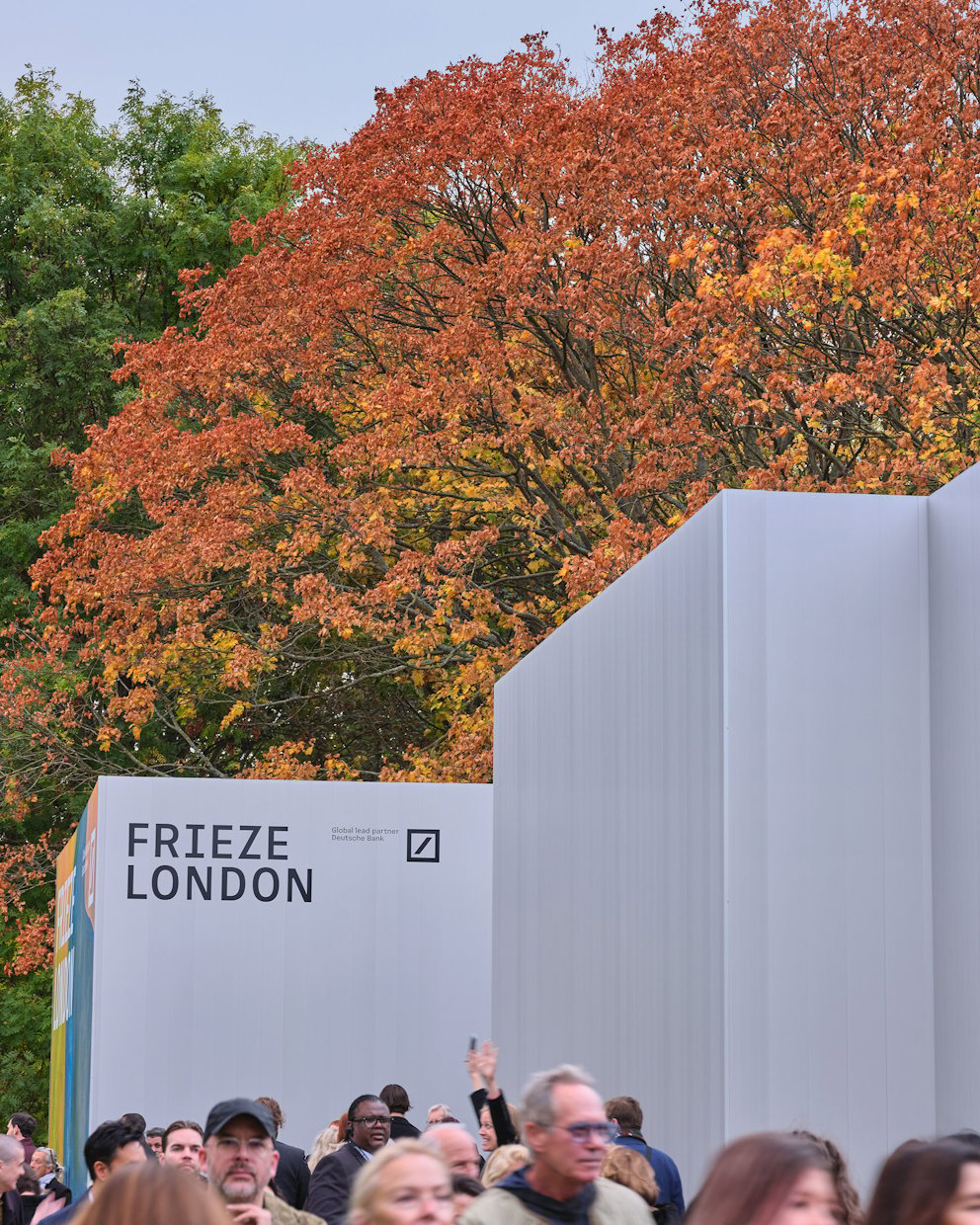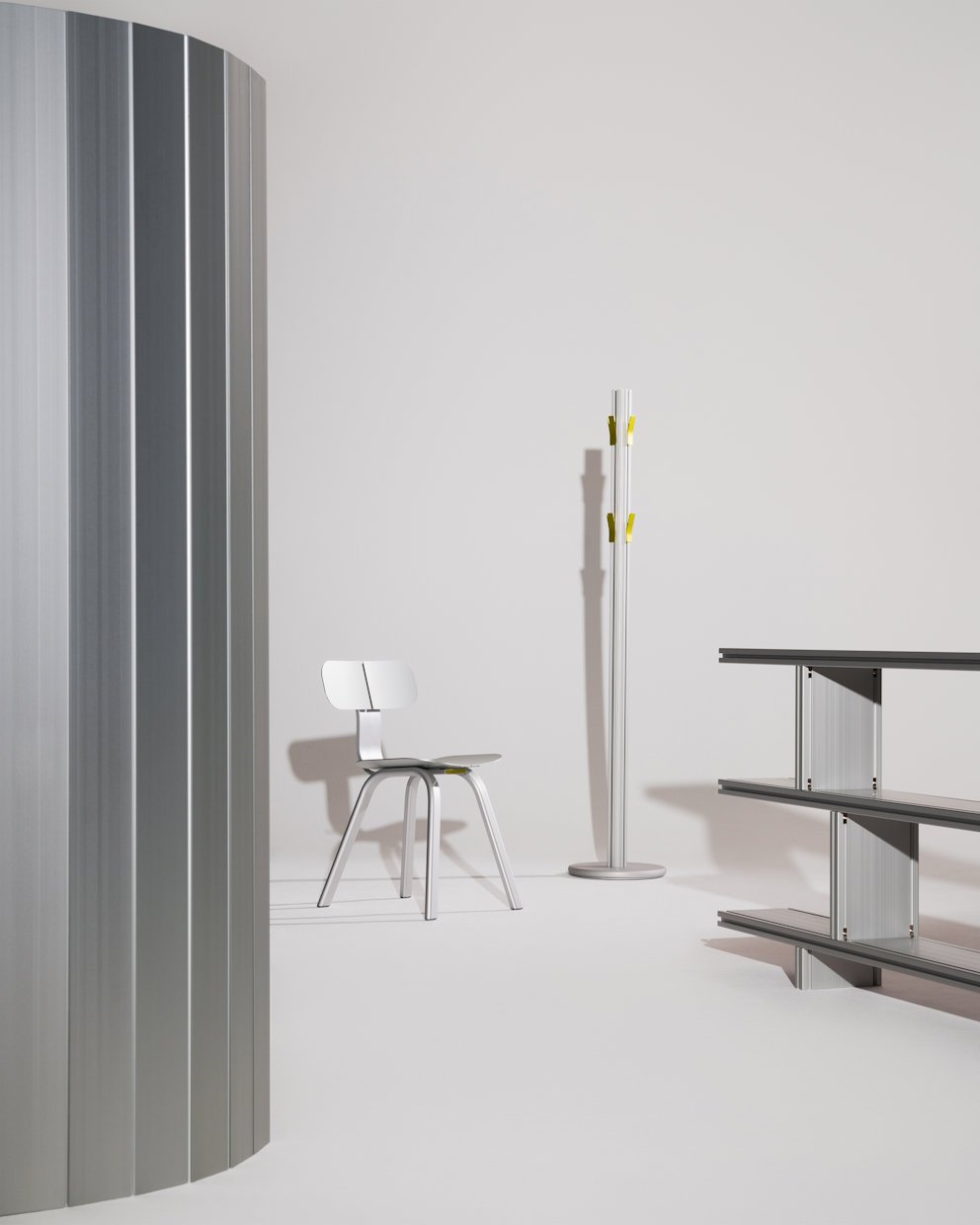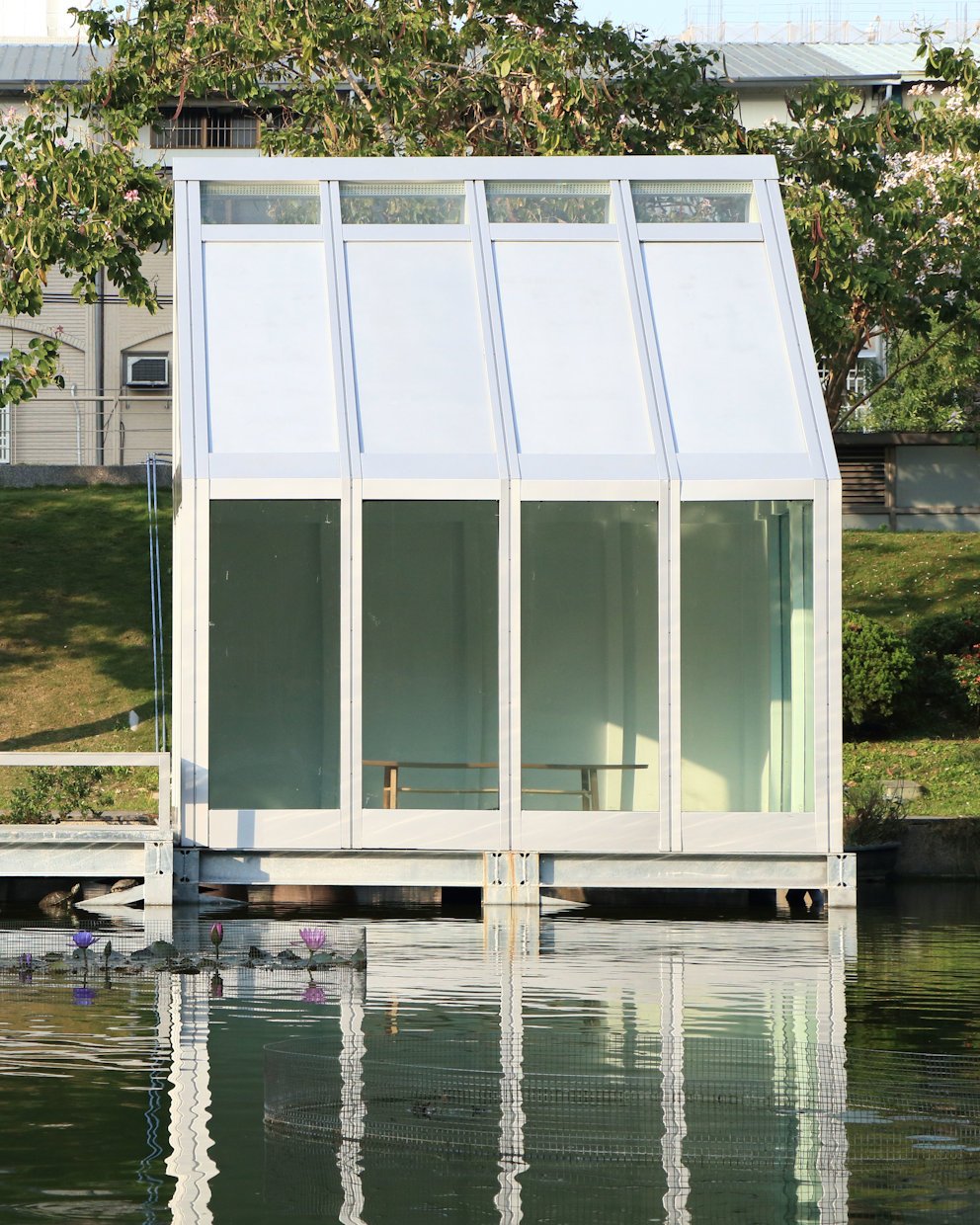At A Studio Between, we have been holding this thought closely. It has guided our work for Frieze London 2025, held once again amidst the manicured lawns and autumnal colours of Regent’s Park. This most contemporary of art fairs, defined by newness, discovery and change invites - perhaps even insists - a questioning of how things are done, made and unmade.
This year, our simple pavilions stand not just as spaces to inhabit, but as an argument for permanence within the temporary. Architecture, whether permanent or temporary is still architecture. Why should its value be diminished based on its lifespan? How could its duration and afterlife should be considered as integral parts of the design process? In this project, a façade system made of prefabricated elements, constructed entirely from recycled extruded aluminium, finishes the buildings, as a diffuse, reflective intervention.
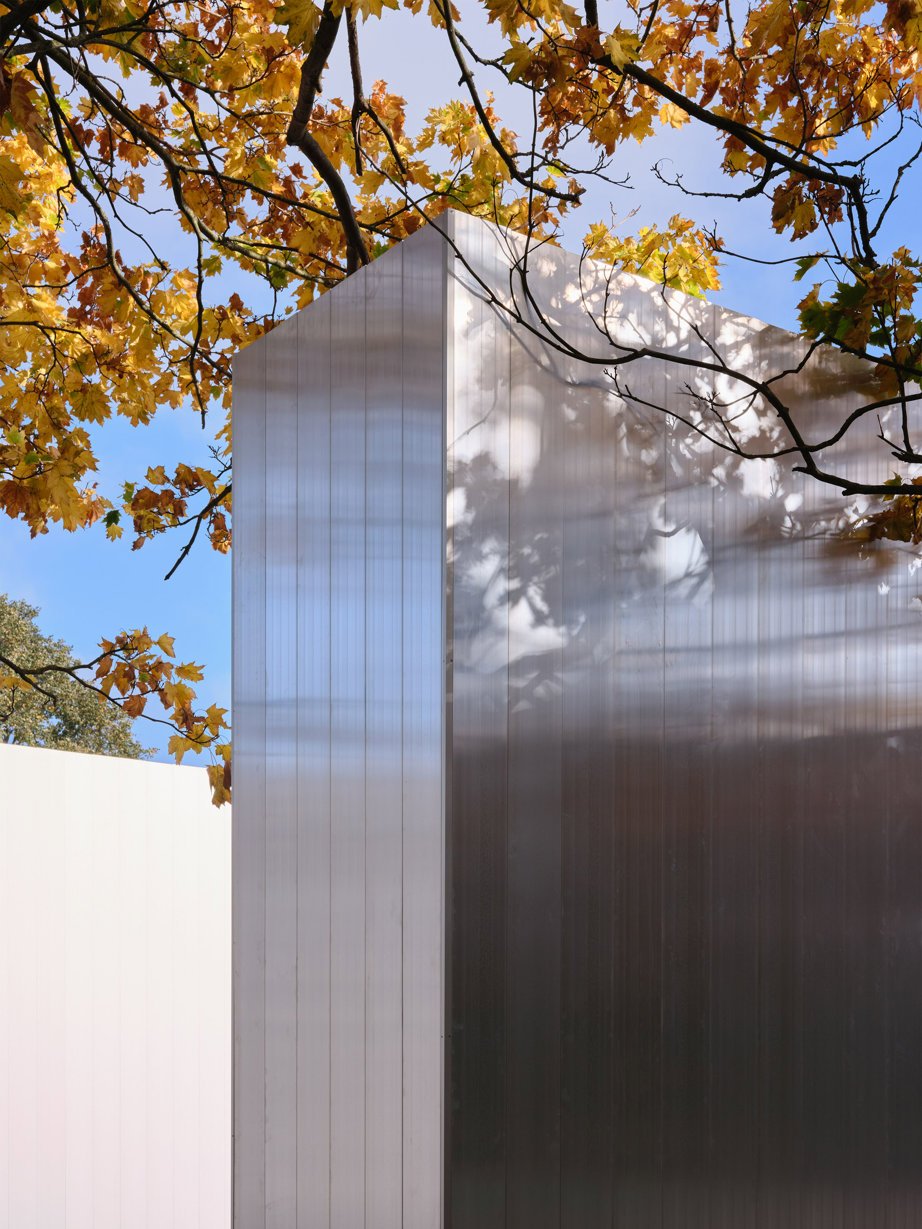
A Material Practice
In 2024, our redesign began this conversation with modest, but meaningful gestures. Recycled fibreboard, lightweight mesh, and a scaffold framework anchored by water tanks spoke of impermanence, but also of potential. Walls and structures, modular and demountable, could be packed away, like the art objects that arrive at Frieze, ready to be used again. That pavilion was a study, a practice, in what might be possible if architecture was treated more like a system than a fixed act. But like all experiments, much was learned.
From timber-based materials to recycled aluminium, we transition toward a system, designed for reuse. Light in its form, material weight, build, and in its economics, with a clear after-life. But also, designed for effect. To make something in that beautiful location, sing.
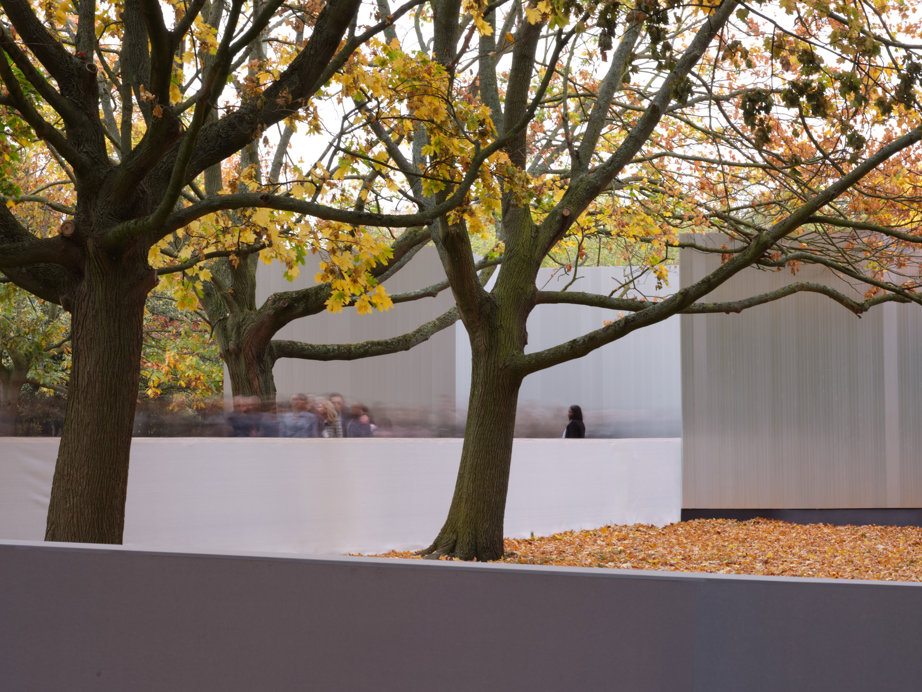
Systems rather than Monuments
Aluminium is a most beautiful material. Light and malleable, natural and precise. Its softness, and the way it reflects light once anodised, is very different to other metals. Anodised for weathering with its subtle variations, or the harder rawness of its mill-finish, it becomes both tough and refined. A material of longevity, and with its endless recyclability, of time. Scaled for assembly by hand, our new cassette system is designed not to be built but simply composed. Each part slots into the whole with ease, made to be stored, reawakened, and crucially reconfigured and tested across future editions of the fair. Repetition becomes rhythm. The reuse allows evolution, year by year, iteration by iteration.
We often speak of retrofitting in relation to buildings of the past, but at A Studio Between, we consider that systems too might be retrofitted. Rethought for scenarios not yet arrived. By embedding the possibility of change into form, and time into material, we begin to reduce waste not by denial of change, but by accepting it.
Of course, this approach brings its own complexities. We must think beyond the moment. How the system is stored, how it weathers and wears in real time, how it’s qualities remain intact or evolve, across years. How it is fixed so it can be reused, how its natural end-life has been prepared for. But overall, allowance of a system, something not fixed, end and change imbued in.
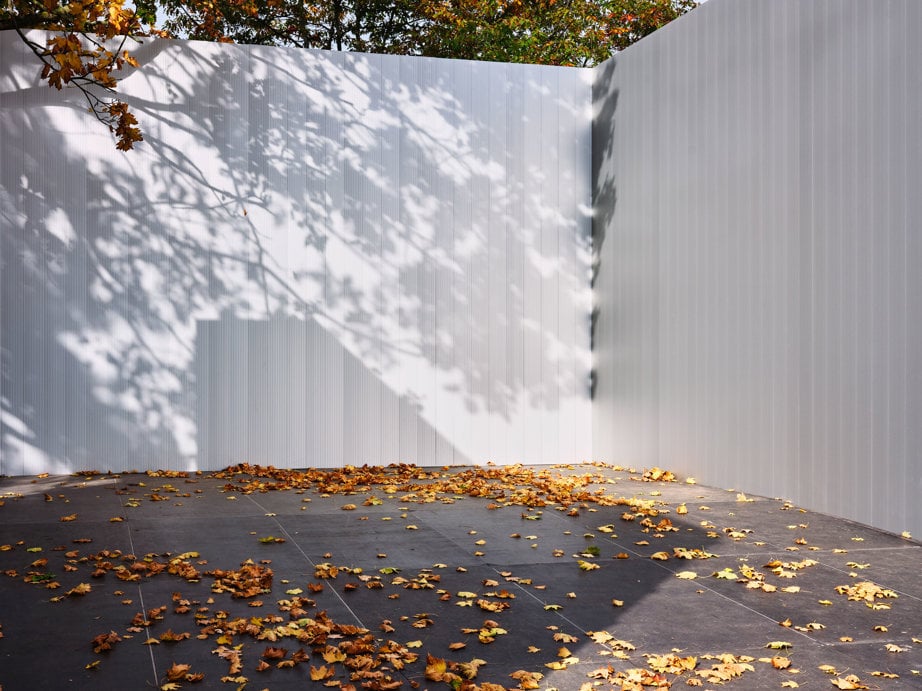
Towards a Thoughtful Temporality
Frieze has always been about discovery, the new and the emergent. But within that spirit lies space for reflection. This project is, in essence, a quiet proposal. One that proposes that architecture, permanent or ephemeral, can be simple, thoughtful, slow, and light.
Temporary buildings should never be built just once. And for us, this is proposal for how architecture can adapt, respond, and change, with time.


